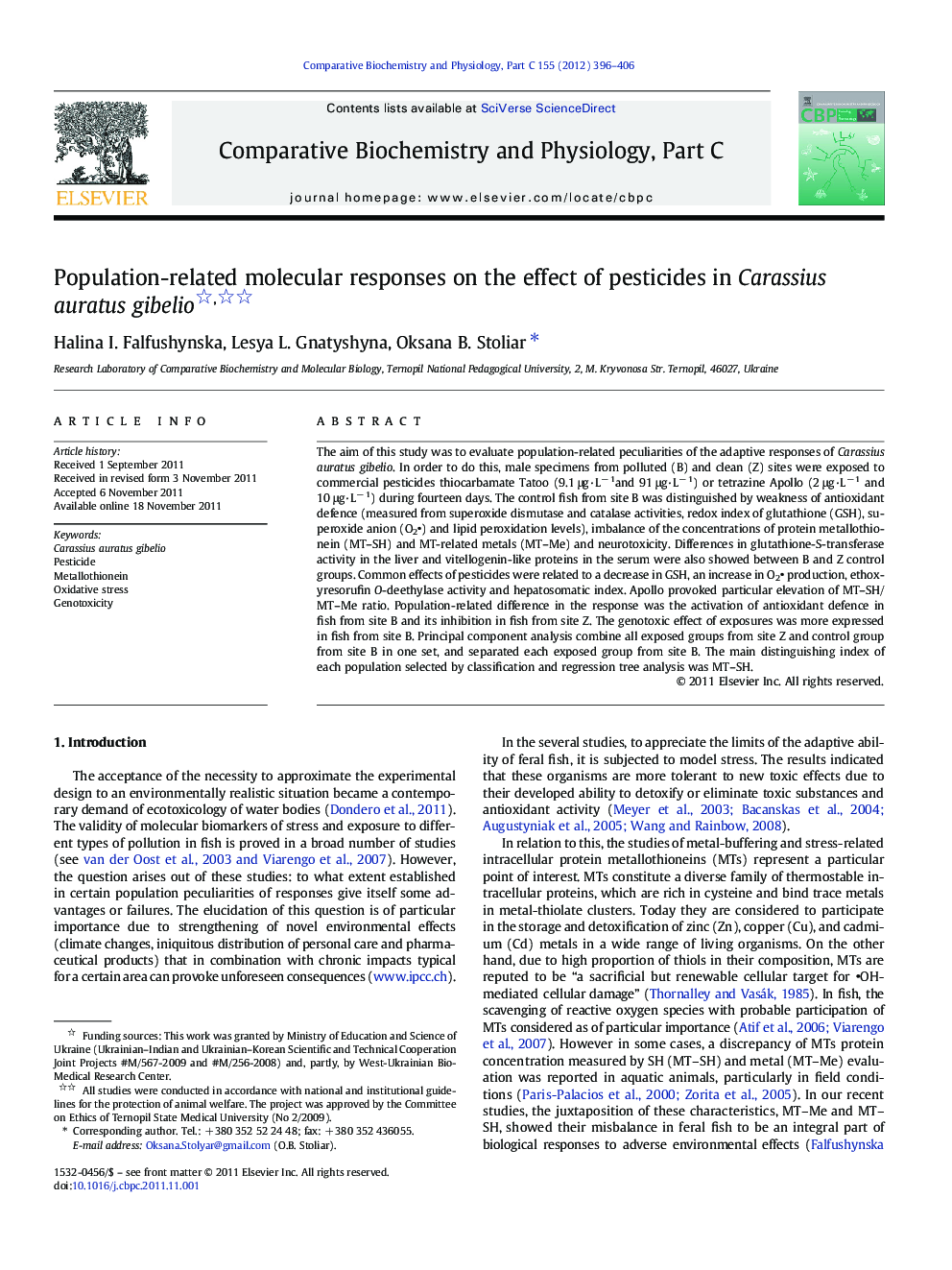| Article ID | Journal | Published Year | Pages | File Type |
|---|---|---|---|---|
| 10821682 | Comparative Biochemistry and Physiology Part C: Toxicology & Pharmacology | 2012 | 11 Pages |
Abstract
The aim of this study was to evaluate population-related peculiarities of the adaptive responses of Carassius auratus gibelio. In order to do this, male specimens from polluted (B) and clean (Z) sites were exposed to commercial pesticides thiocarbamate Tatoo (9.1 μg·Lâ 1and 91 μg·Lâ 1) or tetrazine Apollo (2 μg·Lâ 1 and 10 μg·Lâ 1) during fourteen days. The control fish from site B was distinguished by weakness of antioxidant defence (measured from superoxide dismutase and catalase activities, redox index of glutathione (GSH), superoxide anion (O2) and lipid peroxidation levels), imbalance of the concentrations of protein metallothionein (MT-SH) and MT-related metals (MT-Me) and neurotoxicity. Differences in glutathione-S-transferase activity in the liver and vitellogenin-like proteins in the serum were also showed between B and Z control groups. Common effects of pesticides were related to a decrease in GSH, an increase in O2 production, ethoxyresorufin O-deethylase activity and hepatosomatic index. Apollo provoked particular elevation of MT-SH/MT-Me ratio. Population-related difference in the response was the activation of antioxidant defence in fish from site B and its inhibition in fish from site Z. The genotoxic effect of exposures was more expressed in fish from site B. Principal component analysis combine all exposed groups from site Z and control group from site B in one set, and separated each exposed group from site B. The main distinguishing index of each population selected by classification and regression tree analysis was MT-SH.
Related Topics
Life Sciences
Biochemistry, Genetics and Molecular Biology
Biochemistry
Authors
Halina I. Falfushynska, Lesya L. Gnatyshyna, Oksana B. Stoliar,
